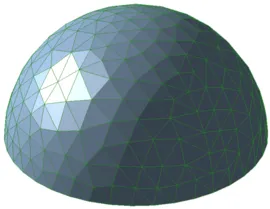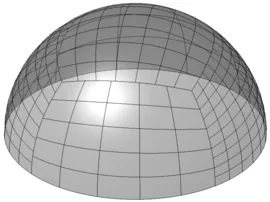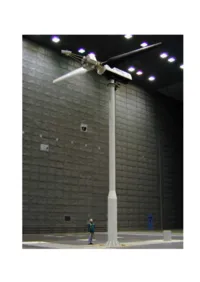Fluid-structure interaction problems fall in the category of the multiphysics problems which are coupled through their interface-boundaries. This kind of problems exhibit the difficulty that although the motion of one of the fields is defined in an Eulerian description (fluid) , the motion of the other field is defined in a Lagrangian description (structure). Additionally, in case one employes numerical methods (Finite Elements, Finite Volumes, etc.) for the discretization of the governing equations, the discretization for each field is in principle different (coarser or finer) from each other because the desired resolutions for each field are quite different. This situation becomes even more complex when one employes isogeometric analysis for the discretization of the structural problem even though the governing equations of the fluid are discretized usually with low order numnerical schemes because in this case the interface boundaries of each problem are highly non-matching.
The coupled problem is solved with the partitioned Gauß-Seidel algorithm combined with the Aitken relaxation method. In order to transfer the fields (displacements and forces) through the interface, the mortar-based mapping method is employed, which is adopted for the case of multipatch Non-Uniform Rational B-Spline surfaces.
NREL Wind Turbine
The NREL Windturbine was solved using a classical Finite Element discretization in the numerical wind tunnel of the Institute and the results in comparison to experimental measurements can be found in the PhD thesis of Dr.-Ing. Stefan Sicklinger. In that work the results of the coupled simulation were produced using Abaqus for the structural governing equations, OpenFOAM for the fluid governing equations and EMPIRE open-source Software for the data-transfer when one also uses control.
The model is considered as a trimmed multipatch Kirchhoff-Love shell in the frame of iBRA, which consists of more than 60 trimmed patches. A comparison to the results produced using classical Finite Elements for a simple flow case is given below.
The goal is to automatize the whole design and analysis process using the iBRA method and to assess and evaluate the advantages of using the multipatch isgeometric analysis as well as the isogeometric mortar-based mapping analysis in FSI simulations.


